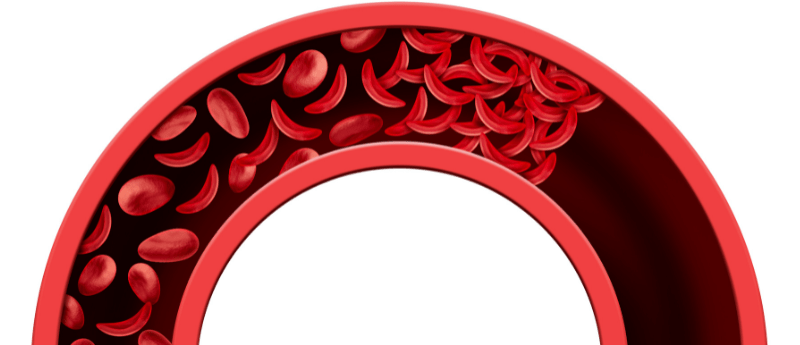Base editing demonstrates favorable results over CRISPR-Cas9 for treating hemoglobinopathies

Recent advancements in gene editing technologies may lead to a cure for hemoglobinopathies, including sickle cell disease and β-thalassemia.
A collaborative study between researchers from St Jude Children’s Research Hospital (TN, USA) and the Broad Institute of MIT and Harvard (MA, USA) has shown that adenosine base editing could be more effective than other gene editing approaches such as CRISPR/Cas9 for treating sickle cell disease and β-thalassemia. Comparing five different gene editing strategies utilizing either Cas9 nucleases or adenine base editors in hematopoietic and progenitor stem cells, the team found that base editing yielded more favorable results.
Sickle cell disease and β-thalassemia arise due to mutations in the β-globin subunit of hemoglobin, resulting in defective red blood cells. Previous studies have shown that restoring the function of γ-globin, a hemoglobin submit expressed during fetal development, could hold therapeutic advantages for patients with sickle cell disease and β-thalassemia. During fetal development, γ-globin combines with α-globin to form fetal hemoglobin. Following birth, expression of γ-globin ceases as it is replaced by β-globin to form adult hemoglobin. The researchers sought to see whether fetal hemoglobin expression could be restored in post-natal red blood cells to counter the effects of the disease, offering a potentially universal therapeutic approach for the disease.
Discussing the team’s approach, lead author Jonathan Yen commented: “We used a based editor to create a new TAL1 transcription factor binding site that causes particularly strong induction of fetal hemoglobin. Creating a new transcription factor binding site requires a precise base pair change — something that can’t be done using CRISPR/Cas9 without generating unwanted byproducts and other potential consequences from double-stranded breaks.”
Comparing base editing and CRISPR/Cas9 approaches at two different target sites that induce fetal hemoglobin production, the team found that base editing yielded more homogenous results than CRISPR/Cas9. In one of the base editing approaches utilized, the team observed 2-to-4-fold greater levels of fetal hemoglobin compared with CRISPR/Cas9 editing. Positive results also demonstrated that base-edited red blood cells from healthy donors and patients with sickle cell disease were well tolerated in immunocompromised mice.
The findings from the study mark a significant breakthrough in the search for alternative therapeutic approaches for hemoglobinopathies such as sickle cell disease and β-thalassemia. While the findings suggest that base editing may be a more effective gene editing strategy, the risks of the procedure in patients are yet to be determined, highlighting the need for more studies evaluating the safety.